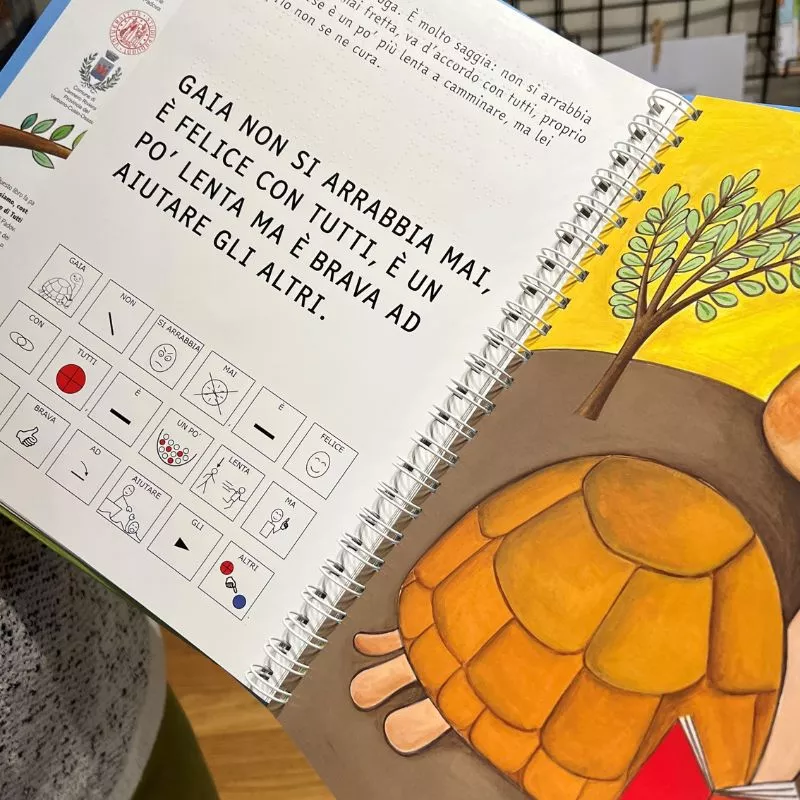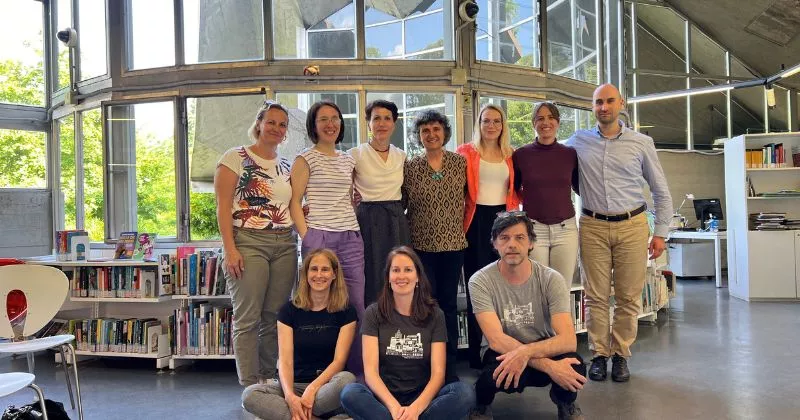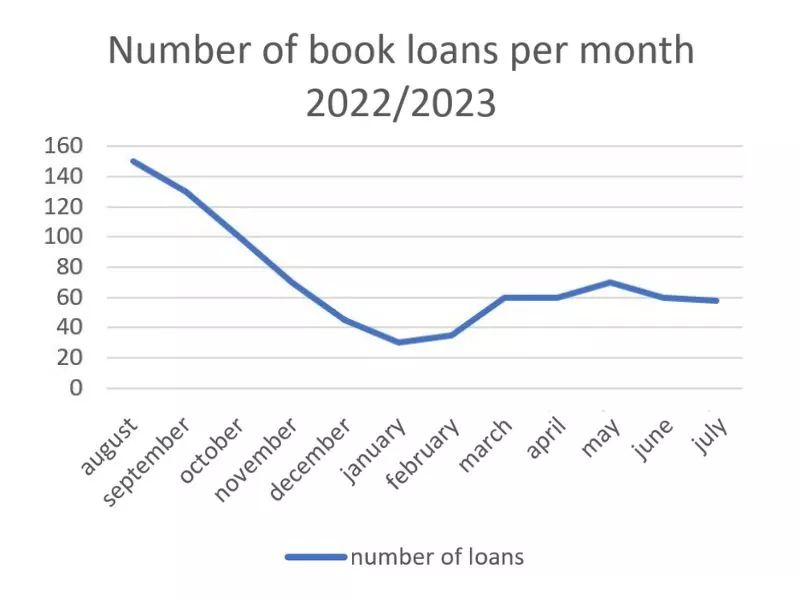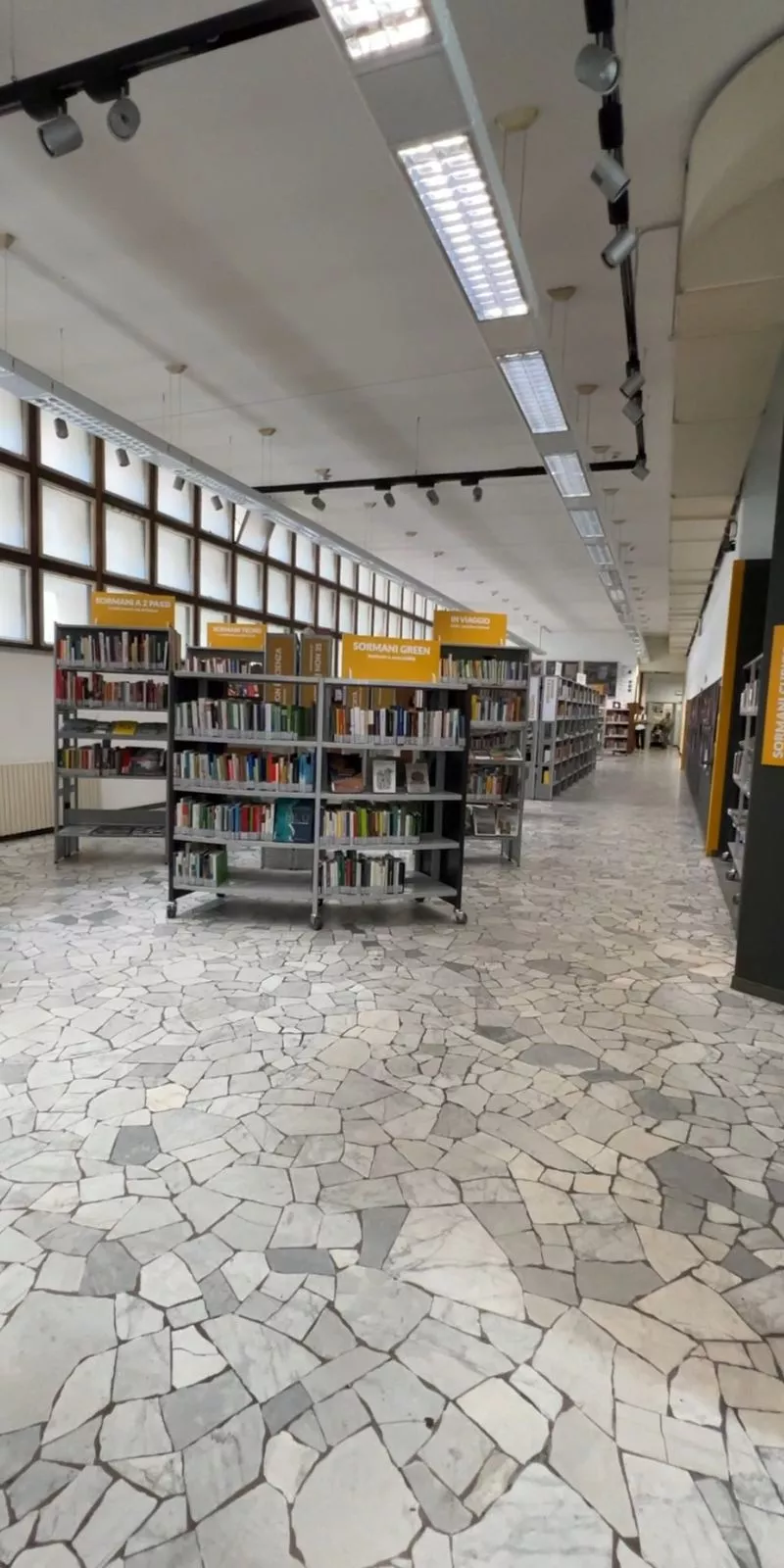Erasmus+ work mobility in the Milan library system
Four librarians from the Ljubljana City Library (hereinafter LCL), Vesna Lenarčič, Matjaž Mohar, Nina Jeklič, and Maja Šefman, embarked on a work visit to Milan as part of the Erasmus+ mobility project, which took place from May 27 to May 31, 2024. Our goal was to learn about their library system and practices in the fields of adult education and digital literacy. This was the first green trip for LCL—we traveled by company car and explored the natural and cultural heritage of the area around Lake Garda, which is less than a two-hour drive from Milan. On our return home, we also visited the idyllic town of Soave, we discovered by chance that it bears the title "City of Books" (you can probably imagine how such a thing would immediately delight a librarian, right?).
Throughout our journey, we took numerous photos and recorded many videos. To give you a taste of what we experienced, you can check out some fun and educational posts on our library's TikTok profile. By watching the videos, readers of these lines can learn a few new words in Italian and Lithuanian, discover interesting facts from our trip, and in one of the videos, you can even see how we managed to convince all the conference participants to take part in our TikTok video.
We chose Milan because it hosted the international Occupy Library conference this year, where we actively participated with a contribution. A closer study revealed that Milan has an interesting library network with a strong emphasis on the digital dimensions of library work and reading clubs. Additionally, like Ljubljana, Milan holds the title of UNESCO's City of Literature. Excited by the possibilities offered by Milan's library network, we began searching for a host organization. We sent several emails to various addresses, including the conference organizers and Italian partners with whom we had collaborated on previous projects. Initially, we encountered a very limited response, with some emails going unanswered, which left us a little bit disappointed. Fortunately, Camilla Notarbartolo reached out to us and, as an efficient and reliable coordinator, contributed to an educational and inspiring mobility experience. She speaks English perfectly which ensured us successful communication, even though most of us do not speak Italian. Milan's library network addresses all four Erasmus+ priorities—environment/climate action, digital transformation, inclusion/diversity, and civic engagement—making it a good practice example for many adult educators. Part of the program was attended together with colleagues from Lithuania and the Czech Republic, adding an extra international dimension to our visit.
At the beginning of our visit to Milan, we were given some basic information about their library network at the premises of the library department for the entire city area. Below is a brief comparison with the Ljubljana City Library.

Milan's libraries collectively hold 1,400,000 items, which equates to about one item per resident, compared to the LCL, which has approximately six items per resident. As noted above, Milan's libraries do not charge membership fees. Interestingly, residents of Milan don't even need to register separately for library services—they use a card that grants access to all public services, including borrowing books. Although the loan period is long, it can be extended twice, allowing for a much longer borrowing period than at LCL, where materials can only be renewed once, with a maximum loan period of six weeks. They also have an intriguing approach to overdue fines. If someone is late in returning an item, they cannot borrow anything for the same number of days they were overdue. Lost or damaged books must be replaced either with the same title or another book chosen by the library.
Books in Milanese libraries are organized according to the Dewey Decimal Classification system, and almost all fiction is grouped together, with the exception of the so-called "gialli" (yellow), i.e. crime fiction. (This term originated when the Mondadori publishing house started releasing a crime series called Gialli Mondadori in 1929, and the name stuck.) Dogs are welcome in the libraries, and staff explained that they are not allowed to refuse them entry. We also learned that DVDs are purchased as soon as they are released, but due to copyright restrictions, they cannot be loaned out for 18 months. During this time, patrons can watch the films in the library at designated stations (computers), but only one person can view a film at a time.
The first library we visited was the Chiesa Rossa Library (translating to "Red Church"), established at the initiative of local residents. It is located in the southern, almost suburban part of Milan, an area with many green and cultivated spaces. The library operates in a former 17th-century stable, and the library space is quite unique: it is long, with high wooden ceilings, and very bright. The walls of the children's section are painted with images of animals from Noah's Ark, while the reading room features portraits of well-known individuals who have achieved great things despite their physical limitations. Chiesa Rossa is an exceptionally socially-oriented library – its distinctiveness lies in its sensitivity to vulnerable user groups (people with disabilities, foreigners, refugees, etc.). In front of the library is a park with playgrounds adapted for children with special needs, which is frequently used for cultural events. They also organize a market for local food producers, and the park includes playground equipment.

In the company of Milanese librarians Matteo Colombo and Alessandro (2nd and 3rd from the left) in the children's section of the Chiesa Rossa Library.

All-in-one – the same book features text, Braille, sign language, pictograms, and a QR code for accessing the audiobook.
The librarians themselves create books tailored for children with special needs, including tactile books and all-in-one books (where the same book contains text, Braille, sign language, pictograms that greatly aid children who are just learning the language, and a QR code for accessing the audiobook). They also have a large collection of so-called silent books, which contain only pictures without text, and are particularly useful when working with refugee children. Rather than focusing on book lending, the library emphasizes a wide variety of events designed to engage as many interested groups as possible. They actively collaborate with the local community, participate in city festivals, work with women’s shelters, and frequently conduct storytelling sessions in schools and kindergartens. The library is open 12 Sundays a year, but on Sundays, only those who wish to work do so. We found it interesting that they do not have fixed schedules or shifts; instead, employees write down when they want to work on a given day.

Silent book (a book without text).

In the park in front of the Chiesa Rossa Library, with librarian Matteo Colombo (3rd from the left) and Laura Ricchina, the library director (4th from the left).
The library is located in the midst of the namesake park, surrounded by greenery. It resides in a historic concrete and glass pavilion designed by Ico Parisi for the 10th Triennale in Milan in 1954, offering a 360-degree view of the park. The library building is considered one of the most original examples of post-war urban architecture. In good weather, visitors can read, study, and participate in various events, meetings, and workshops in the reading garden, shaded by trees. The library houses special collections dedicated to greenery and the environment, Milan, design, as well as travel, wellness, science and new technologies, biographies, cinema, and comics.
Although our visit to the library was brief, we noticed that all the shelves are on wheels for easy movement. During our visit, we met with the coordinator of the reading groups and two colleagues from Lithuania, exchanging our experiences. The library has 51 reading groups, which is quite impressive, especially compared to the LCL, where we have 19. We see potential for collaboration with our reading groups, particularly in the form of group mobility for learners. At LCL, we’ve already broken the ice this year with this type of mobility by visiting a reading group in Oslo. We tried to inspire them to also implement group mobility for their users. Most of their reading groups are, of course, focused on fiction, but they also mentioned that they have one group dedicated to reading non-fiction books. The reading groups in Milan's libraries come in all types and forms. They have traditional reading groups, those that meet via Zoom, and hybrid groups. The hybrid reading groups rotate between all the libraries in the Milan library network, always allowing users to join via Zoom if the current location is too far. Although they are currently targeting young adults, most of the reading group members are over 55 years old.
They also presented the reading promotion activities in Milan as part of the city’s initiative, the Pact for Reading. They organize reading events in unexpected locations (such as administrative offices where children wait for their parents) or in unexpected ways, so that people might not even realize they are reading (like in an escape room where clues are hidden in books). We found this to be an excellent example of best practices that we could consider integrating into our library’s work as well.

In the Parco Sempione Library with the coordinator of reading clubs, Federica Reali (top, 2nd from the left), the reading promotion coordinator, Paola Petrucci (top, 4th from the left), our mobility organizer in Milan, Camilla Notarbartolo (top, 2nd from the right), and two colleagues from Lithuania (top, 3rd and 5th from the left), along with the newly hired librarian Alessandro (top, 1st from the right), who joined us several times to familiarize himself with the library activities.
Our next stop was a unique library located in a metro station underpass. This is an automated library managed by a robot. The machine cost approximately €40,000. Since it was delivered to the library in one piece, it had to be transported to the Porta Venezia metro station during the night to avoid passenger congestion. This is the only automated library in Milan, as it is a pilot project (operating for two years), but they plan to install more such libraries in the coming years. The stock in the machine needs to be monitored every 1–2 days, with refilling or emptying occurring every three weeks, while replenishing the entire content takes two days. The machine holds about 200 books, with typically 50–100 in circulation (see Graph 2). Most of the books are borrowed by young adults aged 18 to 30, though those up to 50 years old and even those between 51 and 70 years old are strong competitors (see Graph 1).
In the past year, 357 users borrowed 1,009 items. The highest number of loans by a single user was 34. Biblio Express also accepts returns of books from other branches, though the majority of returns still consist of materials from the original machine (81%). Most loans occur between 11:00 AM and 1:00 PM.

Graph 1: Representation of the age distribution of BE users.

Graph 2: Representation of the number of loans per month in the years 2022/2023.
Following a decline in loans in 2022, two significant innovations were introduced, leading to a resurgence in user engagement:
- March 2023: Audiobooks and films were added to the collection, and the number of items that can be borrowed was increased to 2.
- May 2023: A website was launched allowing users to check the stock in Biblio Express daily before visiting the machine site.
The next library we visited was the central library of the Milan library system. It is located in a beautiful 16th-century building. In the past, it was a private residence of a wealthy Milanese family and later a museum. The library moved into this building in 1956. Before that, the library operated from various locations, including the Sforza Castle, where the entire library collection was destroyed during the bombing of Milan in World War II. The collection was almost entirely restored after the war.
The Sormani Library serves a dual purpose; one part of the collection (a smaller portion, only 1% of the material) is open access, containing the oldest books dating from 2020, and this collection is regularly reviewed with "old" books being moved to storage. The other part of the collection, which includes 650,000 books, is a closed stack area. This section houses works from the 16th century and includes its own restorers. It also maintains a historical collection of serial publications, comprising over 20,000 titles and around 7,000 microfilms. Currently, they are cataloging vinyl records, with 14,000 already processed out of a total collection of 30,000 units.
The library's open access and youth sections were established only in 2019. They also offer some, as they describe them, unusual services: consultation on microfilm, document delivery (reproduction of individual articles from journals or parts of books for personal study and research purposes, in compliance with copyright laws—up to three documents per month, a total of ten per year—and reproduction of rare or old works by prior arrangement and approval), interlibrary loan including with the national library, and the Ask a Librarian service (provided by volunteers). The book dispensers are very similar to ours and, like in LCL, are available only for borrowing. Books have a label on the spine indicating the subject area (with the word or the first one or two letters of the subject area and the Dewey Decimal Classification) and the author.
The storage is located in a tower with four floors, and the books are arranged by age: the oldest books are on the lowest floors with the restoration department, while the newest books are at the top.

The rear view of the Sormani Library.

The open access section of the Sormani Library, where only 1% of the collection is located.
This library is located in a residential neighborhood center, within a shopping mall. We chose to visit this library because it hosts the so-called LABrary (a blend of the words "laboratory" and "library"), which has been operating since the end of 2022. Here, various free activities related to modern technologies are offered for children, teenagers, and adults, ranging from those with prior knowledge to beginners. Available resources include a 3D printer, several Arduino programming kits, Lego Mindstorms, Ozobot robots, and laptops. They organize workshops in programming and product creation.
We quickly toured the rest of the library, as our main focus was the LABrary. We noticed that they have a sizable children’s section and a reading room that was completely filled with students during our visit.
We also had the opportunity to observe in real-time how they are converting their library materials to the RFID (Radio-Frequency Identification) system, which we have also used in LCL for several years. This process was conducted while the library was open. At LCL, we completed this transition during inventory when the library was closed, as each book needs to be equipped with a special RFID tag, and then linked to the existing barcode number on a special board. At Gallaratese Library, a librarian managed this task using a cart with a computer, a barcode reader, and a tagging board, moving from shelf to shelf. They have allocated 8 months for the completion of the entire collection's transition.

Welcome gifts in the LABrary.

Working in the LABrary.

Flipping through picture books in the children's section – librarians can't help but be themselves.
IN CONCLUSION
We were impressed by Milan's well-developed library network and the motivated librarians who place a high value on user well-being. While it is often the case that Slovenians perceive Western systems as more organized and modern, we found that our system is at least comparable in many respects, and in some areas, perhaps even more advanced. Nonetheless, we sensed that Milan's libraries are less bureaucratic than those in Slovenia. They handle issues with users with a greater sense of trust and ease (perhaps reflecting a different temperament?). What stands out is their strong commitment to putting the user first. The libraries are highly inclusive and offer a diverse range of activities, including for vulnerable groups. We were particularly inspired by the librarians at Chiesa Rossa, who are truly dedicated to their mission. Milan’s libraries have also proven to be very innovative in developing automated libraries and in promoting reading and running reading clubs. Their methods for conducting workshops on digital skills, catering to both young and older users, were also noteworthy. Looking ahead optimistically, they are excited about moving into a new central library expected to open in 2026.
Our Milanese hosts were pleasant, engaged, and entertaining. We look forward to the possibility of enhancing our collaboration with a future visit from them to Slovenia.

Participants of the work mobility in Milan as part of the Erasmus+ project, librarians from LCL: Nina Jeklič, Vesna Lenarčič, Maja Šefman, and Matjaž Mohar.

Nina Jeklič is employed at the Ljubljana City Library, where she conducts individual digital literacy training for older users, manages the Facebook and Instagram social media accounts for the Prežihov Voranc Library, and leads the Books and Movies book club. She is also involved in reading promotion projects such as Growing Up with a Book and Summer Readers.
Maja Šefman is a librarian at the Ljubljana City Library. She coordinates Erasmus+ mobility, various bibliopedagogical activities, and training for Slovenian librarians on animation and creating interactive content. She also participates in reading promotion projects and manages the City Library Ljubljana’s social media accounts.




